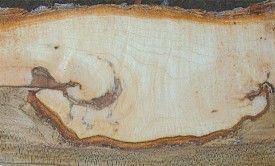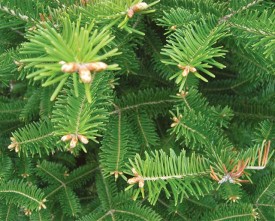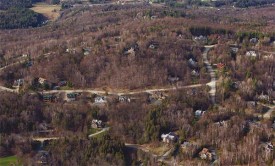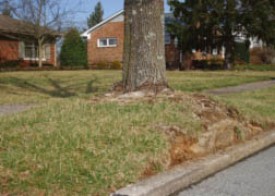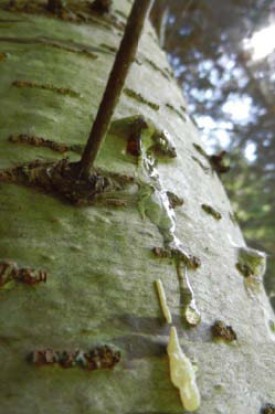Somehow trees put up with all manner of injury and assault during their lives. They have to: they are rooted in place and cannot move to avoid injury. Whether it’s ice- or wind-stripped…
Woods Whys
Regular Northern Woodlands magazine column answering questions about the woodlands in the Northeast.
Woods Whys: Can I Fertilize a Forest Like I Fertilize a Garden?
Forest soils certainly benefit from the addition of plant nutrients. Elements like nitrogen, phosphorous, potassium, calcium, and magnesium are the building blocks of leaves, twigs, trunks,…
Woods Whys: Acorns and Weather
Last fall when acorns were falling out of the oak trees by the thousands, a neighbor said we could expect a hard winter. Presumably the deer needed lots of acorns to last them through the…
Woods Whys: Self-Pruning Branches
I’m interested in learning more about how trees self-prune. How does a tree “decide” that a branch is no longer useful? Think of it as nature’s cost-benefit analysis.…
Woods Whys: Needles vs Leaves
Why Do Evergreen Needles Look So Different From Deciduous Leaves? Ask anybody to draw a leaf and damn few would draw a pine, spruce, hemlock, or fir needle, and even fewer would draw the green…
What Is Forest Fragmentation and Why Is It A Problem?
Forest fragmentation is the breaking of large, contiguous, forested areas into smaller pieces of forest; typically these pieces are separated by roads, agriculture, utility corridors,…
What is a Forest Stand (and Why do Foresters Seem so Stuck on Them)?
In assaying wooded land, foresters observe, measure, describe, and map the forest, delineating it into smaller areas – or management units – known as stands. In this way, a forest…
Woods Whys: Why Is It So Hard To Grow Street and Yard Trees?
Let’s face it: trees are better off in the woods. Although forest trees – like their more urban counterparts – face many threats to growth and survival, at least in the woods…
What Determines How Tall a Tree Can Grow?
A tree’s growth is based, in part, on competition from its neighbors. Its first priority is to gain access to the sun, and in a forest up is the only way to go. (An open grown tree will…
What are those Blisters on the Bark of Balsam Firs?
Those bulging cysts on the otherwise very smooth, gray-brown bark are a distinguishing characteristic of balsam fir trees. They’re all over most fir stems. Aside from the really young…


